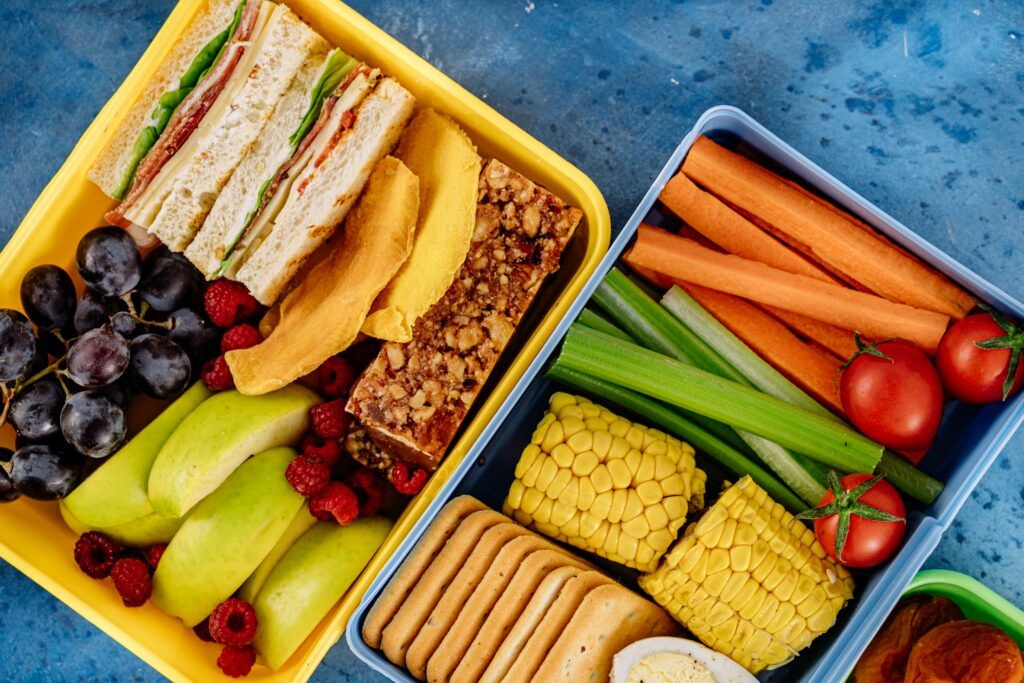Are you struggling to lose extra weight?
Then this post is for you. As women we sometime struggle to keep within a healthy weight range for a number of reasons. Whether it is due to life style habits learned from childhood or what may seem to be inherited fat genes, there are proven ways to tackle and overcome love handles, belly fat, and heavy thighs that affect your body image and your health and well being. Here are seven top tips to help you get the weight and size you long for. And I have also included a bonus tip that you may want to check out if you struggle with puffy feet and water retention around your period.

Different Types Of Weight Loss
Weight loss, refers to a reduction of the total body mass, which can occur as a result of a loss of fluid, body fat (adipose tissue), or lean mass on average in the context of medicine, health, or physical fitness. This reduction in total body mass can occur as a result of a reduction in lean mass on average (namely bone mineral deposits, muscle, tendon, and other connective tissues).
Recommendations For Reduction of Excess Body Fat
Well these seven recommendations are for women who want to lose excess fat and the weight it adds to your body. And although watching what you eat and getting enough exercise are probably the two most significant factors in women’s weight loss, there are still a lot of other considerations to take into account.
Backed By Research
Numerous studies have shown that a person’s appetite, metabolic rate, body weight, and the amount of fat that is stored in the abdomen region may be significantly impacted by a variety of things, from the quality of sleep that a person gets to the amount of stress that they experience.
The good news is that when it comes to shedding extra pounds, a few tweaks to the way you go about your daily routines might result in big improvements in your weight reduction efforts. So here is a list of seven top weight loss suggestions for women to keep in mind according to experts in the field:

1. Enjoy Foods In As Natural A State As Possible: Have More Raw Food And Less Cooked And Refined Food
Enjoy more fresh fruits and vegetable in your meals and snacks. Start every meal with fresh raw fruits, nuts or vegetables. Remember that once you cook your food or consume food that has been cooked (by you or someone else) that food has already lost a lot of nutrients through the heat used to cook.
Raw Foods Are Alive And Impart Life
Notice too, that cooked food cannot not be grown. For example cooked peas and beans would not be placed in the ground and expected to grow….its no longer alive. However if it is sprouted and eaten raw it is very much alive and your body identifies this once it enters your digestive system. And you would have retained all the nutrients and phytochemicals your body needs to relieve oxidative wear and tear at the cellular level.
‘Skin Your Animals Not Your Plants’
Why do I say that? Peeling your fruits and vegetables also reduces much of the fibre content and the greater volume of nutrients just under the skin of your plant based foods. It is really your meats that you should carefully skin and trim to remove visible fat that is excess to what you require. Note that even after removing visible fat your roasted meat, fish and poultry still drains a lot of fat under the griddle. This shows why frying your animal sourced foods is such an unhealthy practice even when weight loss is not the primary aim.
Why Eating Cake, Cookies and Cream Make You Hungry

Processed foods are linked to the vicious cycle of causing cravings for these same types of food, because they cause a spike in the amount of sugar in the blood, which can be harmful, and results in the body secreting more insulin, which leads back to the feeling of hunger, over eating, weight gain, belly fat …. and so on. While unrefined foods provide fibre that makes you feel full for longer and nutrients that nourish your body at the cellular level.
So by replacing refined foods such as white bread, spaghetti, and ready-made recipes, among others, with meals that include whole, unprocessed foods like oats, nuts, brown rice, quinoa, buckwheat, green salads and barley that are made from whole foods and grains rather than refined foods.
2. Choose Resistance Training Along With Aerobics As Part of Your Routine: Build Muscles and Burn More Calories
Resistance training, when done in conjunction with aerobic exercise, can result in an increase in muscle mass in addition to an improvement in aerobic capacity. Muscles work hard at metabolism while fat just hangs around as stored energy. Nothing wrong with that but the excess fat is harmful to your health and your appearance.
But more muscle mass causes an increase in the number of calories that are burned even when you are doing nothing at all, it is especially beneficial for women who want to maintain optimal body weight.
Reduce Osteoporosis Risk
In addition to this, strength and resistance training helps to maintain bone mineral density, which is an important step in the prevention of osteoporosis (a condition in which there is a reduction in both the quantity of bone tissue and the thickness of the bone).
So lift weights, kettle bells, or practice exercises that only require your body’s weight, such as planking and also parking further away and walking, taking the stairs instead of the elevator, or going for a walk during your lunch break, it may be easier to get started with an exercise routine if you do those things.
3. Increase Hydration And Reduce Feelings of Hunger: This May Naturally Reduce Calorie Intake
Increasing the amount of water that you consume is a simple strategy that can aid in weight loss while requiring very little in the way of additional work on your part. Studies show that the number of calories that were burned increased by 30 percent after participants drank 16.9 ounces (500 ml) of water and then waited 30–40 minutes after drinking the water before eating their meals.
This reduces the total number of calories that they consumed by approximately 13 percent, as the findings of one of the studies have shown.
Do You Like Soups And Stews
Another good way to increase water intake, especially if you know you are not usually good at it, is to incorporate foods and meals with higher water content, such as soups, stews, jellies and raw salads. Soups and stews help you to consume the nutrients that would have been lost from boiling foods and discarding the water used. This should ideally be kept to be used as stock.
Also try to reduce or avoid caffeinated drinks that act as a diuretic that promotes water loss though frequent urination. Coke, coffee, tea and chocolate are the main culprits.
4. Be Creative and Incorporate a Variety of Quality Proteins: You Will Feel Full for Longer and Build Muscle Faster
There are great varieties of nuts, pulses (also referred to as legumes), and other protein sources such as poultry, fish, eggs and dairy products are examples of foods that are high in protein and should be included in a balanced diet. This is especially important in staving off hunger and the urge to eat between meals, by keeping you full for longer. And you may incorporate protein in your diet through meals as well as supplements such as whey and casein powder.
Also if you get your day off to a good start by eating a nutritious breakfast including a good protein source, it can help you feel full until the next meal and get you off to a good start overall for the day.
5. Identify and Address Your Stressors: This Reduces Stress Hormones and The Urge to Indulge Comfort Overeating
It has been proved that putting on weight gradually over some time is associated with having a stressful lifestyle, and this weight gain in turn results in a greater likelihood of adding to feeling stressed. Your body produces certain hormones in response to stress, that support accumulation of visceral fat.
In addition, research has shown that stress can change people’s eating practices and lead to the development of eating disorders such as comfort eating and binge eating.
Exercising And Leisure Helps Relieve Stress
A wide variety of activities, like walking your dog, going for a run, swimming, practicing yoga, listening to music, maintaining a journal, and having conversations with friends or family, are all simple and effective strategies for lowering levels of stress. Good time management also makes it easier to incorporate hobbies and leisure time into a busy life style.
6. You Must Have A Plan to Succeed By Setting Measurable And Achievable Goals
If you want to lose weight and improve your odds of success in doing so, using the SMART goal-setting process can make it easier for you to reach your goals and also increase the likelihood that you will do so. Take time to plan your strategy for weight loss. And one habit that is proven to work is keeping a journal of your progress in the journey to lose weight. This can be done using a purpose designed journal or an app that helps track your progress.
The features of a goal that should be specific, measurable, attainable, relevant, and time-bound are referred to by the acronym SMART. A goal should have all of these criteria. This helps to keep you accountable and to work smart as you design a plan for how you can accomplish your goals.
Plan To Approach This In Manageable Chunks
For instance, rather than just setting a goal to lose 10 pounds, you could create a goal to lose 10 pounds in three months by keeping a food journal, going to the gym three times a week, and including a serving of vegetables with each meal. This would be a more specific and attainable goal than simply setting a goal to lose 10 pounds.
7. This Final Tip Is to Try The Highly Recommended Intermittent Fasting
This practice has gain a lot of media attention recently. Intermittent fasting is the practice of alternating between periods of eating and fasting within a 24 hour period to a 7 day period. This type of fasting can last anywhere from a recommended 16 hours out of 24 hours to 48 hours in a week.
The 5:2 Approach to Intermittent Fasting
When it comes to shedding unwanted pounds, some individuals are convinced that intermittent fasting is equally as effective as cutting back on the number of calories they take each day. For example the 5:2 intermittent fasting model includes normal eating of the recommended daily calorie intake for 5 days each week while taking between 0-500 calories each of the other two days of the week.
8. Here Is My Bonus Tip:
For women who are struggling with water retention and oedema in the feet around the time of your periods, here are some of the steps that may help alleviate this:
- Have a medical assessment to rule out renal or cardiac problems.
- Also monitor your haemoglobin levels and ensure you incorporate dark green vegetables in your diet everyday and if your menstrual periods are heavy and/or last for a long time (5-7 days),
- Discuss iron supplementation with your doctor if your haemoglobin falls sharply due to heavy periods.
- And finally reduce your salt intake to reduce water retention. Excess salt intake may cause oedema around that time of the month.
